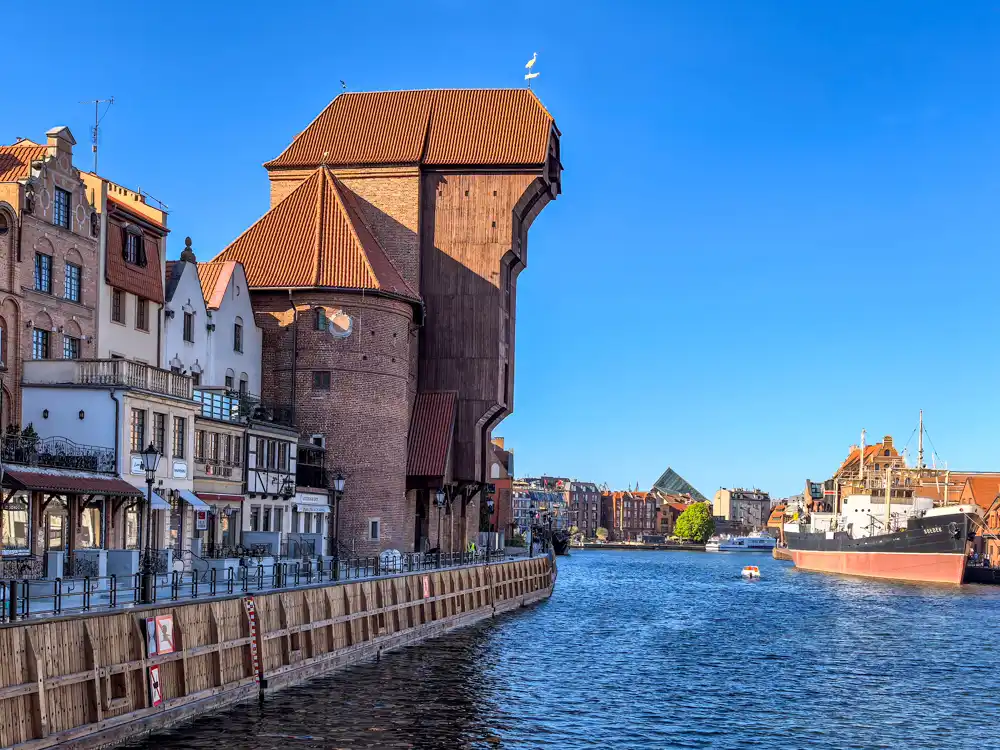Or how we found a wooden machine cooler than any steam engine. Some cities have the Eiffel Tower. Others, the Statue of Liberty. Gdańsk? It has the Gdański Żuraw—a medieval wooden beast standing tall by the Motława River since the 15th century. It looks like it might transform at any moment into a steam-powered locomotive or a robotic dolphin.
We thought we were just going to see another piece of old engineering. Instead, we found ourselves in the belly of a medieval machine, where human legs powered pulleys like hamsters in a wheel, lifting cargo off ships. It felt like a page straight out of Da Vinci’s notebook. Johny didn’t believe it ever actually worked. I couldn’t believe it wasn’t hiding some kind of engine.
Gdański Żuraw
Johny stood beneath the crane and stared up. For a while.
“It’s like… like a church swallowed a mill and decided to lift ships,” he said.
Fair point. Since the 1400s, the Gdańsk Crane served as cargo hoist, shipyard tool, and city gate—all in one.
And even today, though it’s now a museum, it still smells of chain grease and shipmen’s curses. It still hums with the rhythm of wood, rope, and muscle.
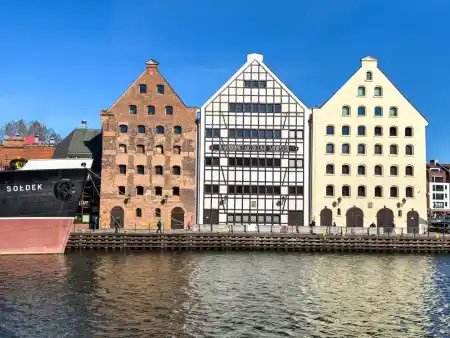

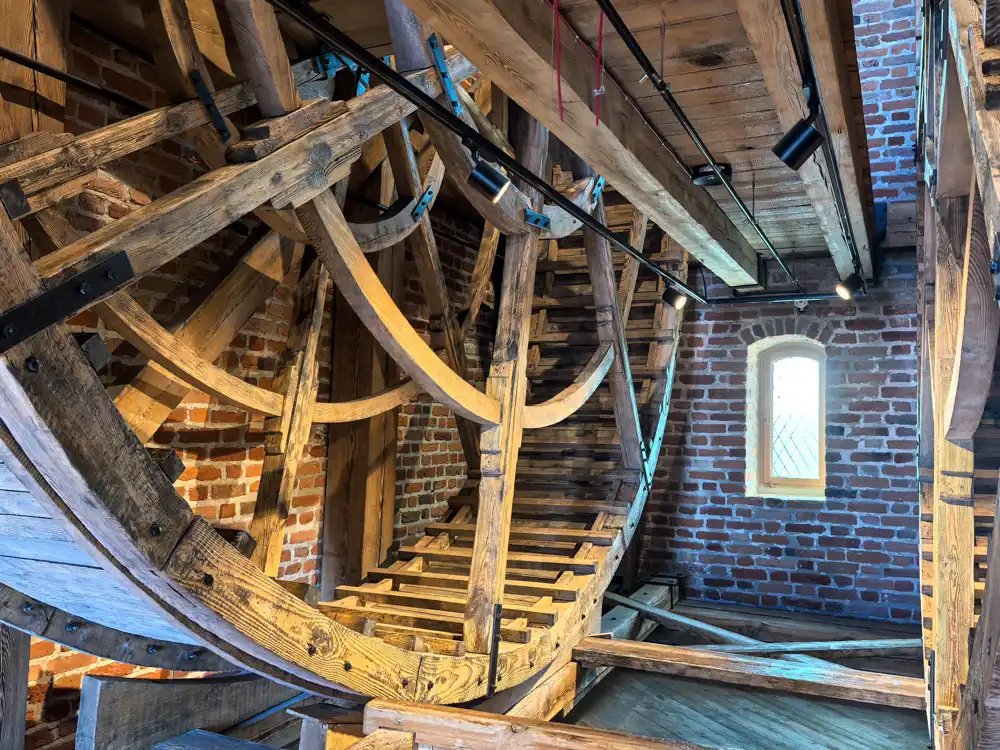
So What Is It, and Why Should You Bother?
To us, the Żuraw felt like a medieval engineering miracle: a pulley system powered by two giant wooden wheels, each manned by three people. Yes—actual men walking inside giant wheels, hamster-style, in sandals and tool belts.
“So someone had to walk in that thing just to lift barrels?” Johny asked.
Exactly. Pure physics and calf muscles. No steam, no electricity. Just gravity, sweat, and a medieval mind with imagination.
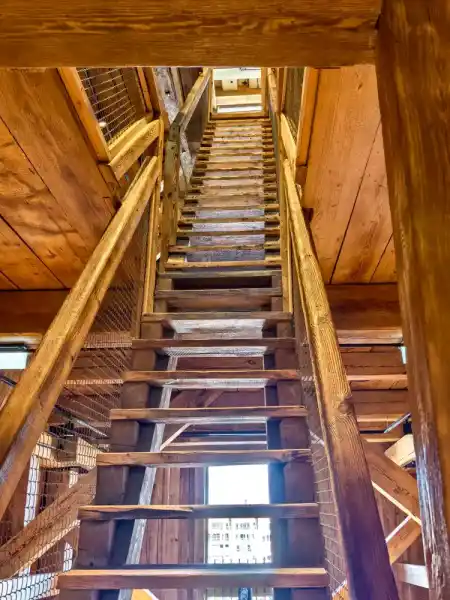
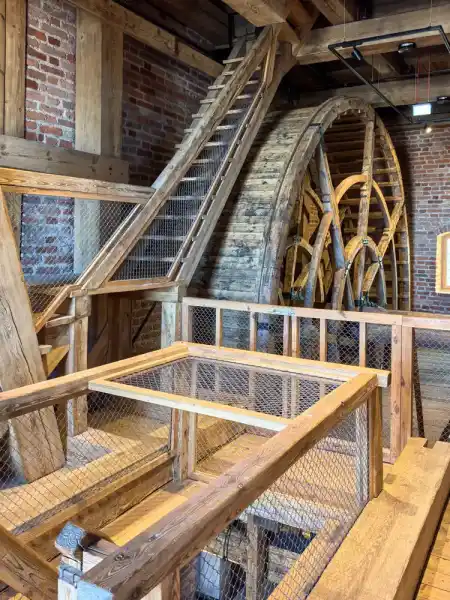
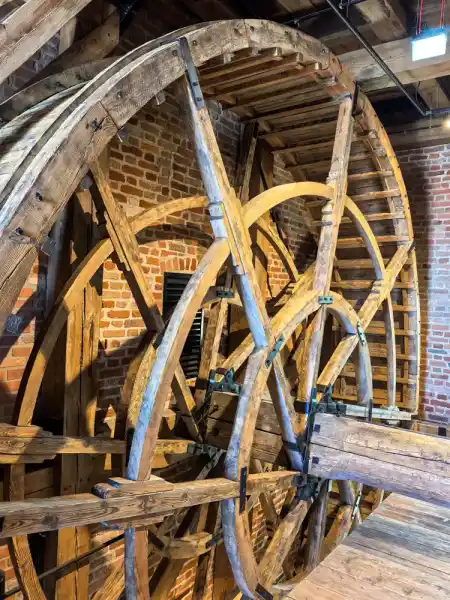
No wonder the Żuraw became one of Gdańsk’s most iconic symbols.
The Timber Cathedral of Trade
Inside, it smells like sawdust and iron. You get the urge to ask for a helmet and sign up for a catapult-building workshop.
You climb through the wooden levels while gears grind in your head and Johny bombards the silence: “Where did the cargo come in? Where did it go? What if the guy got dizzy inside the wheel?”
And then it hits you—this wasn’t just a crane. It was the beating heart of the city’s port economy. A tollbooth of the sea. Everything came through here—barrels of beer, sacks of grain, medieval trade containers.
Today, it’s just us. In sneakers.
Tourist Paradox, 2020s Edition
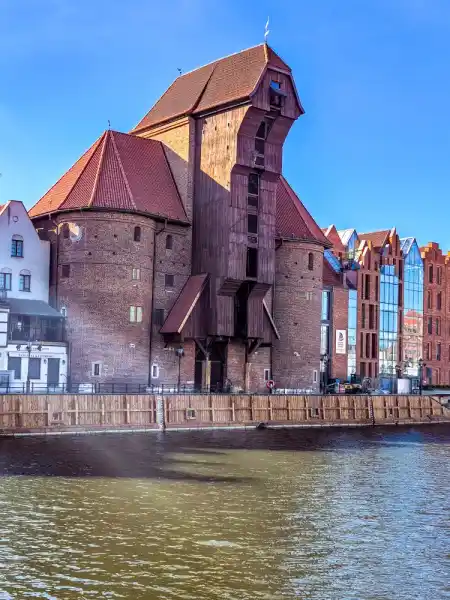
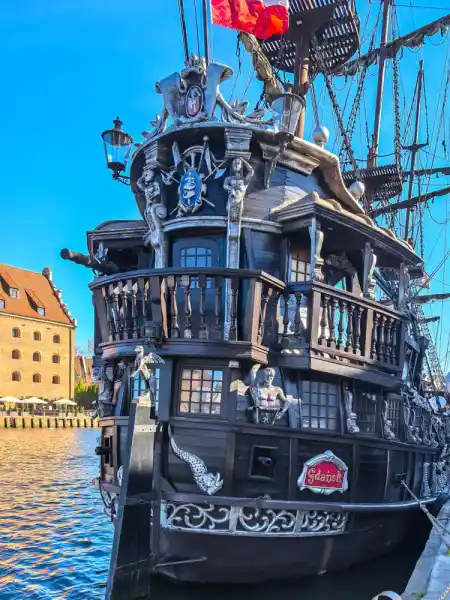
Right next door, a retro pirate-themed tourist boat named Gdańsk was gearing up for another loop. It looked dangerous in a theatrical way—but you knew it was just part of the show. Branded experience, beer on board, and speakers blasting sea shanties. A floating carousel.
And yet, right beside it stands the Gdaňski Żuraw—a one-of-a-kind, untouched original. But in the rush for fridge magnets, cocktails, and curated experiences, how many people even notice it?
A Sketch for Leonardo
Imagine Leonardo da Vinci visiting Poland in 1470. He sees the crane and asks the local builders: “Maestro, what is this strange structure?”
The man shrugs and replies, “That’s how we load beer onto ships—and see how long men can run in circles before they pass out.”
Leonardo would’ve pulled out his notebook and jotted: “Inspiration for Renaissance CrossFit.”

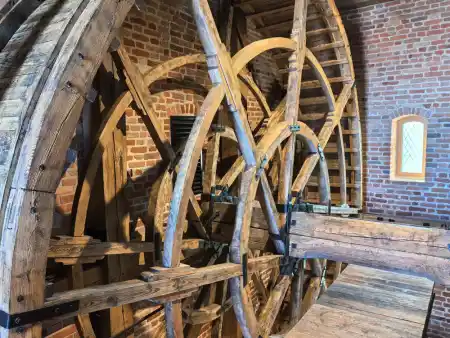
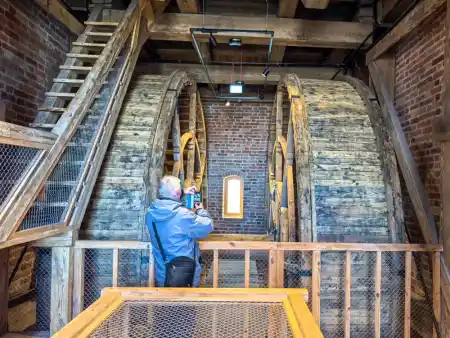
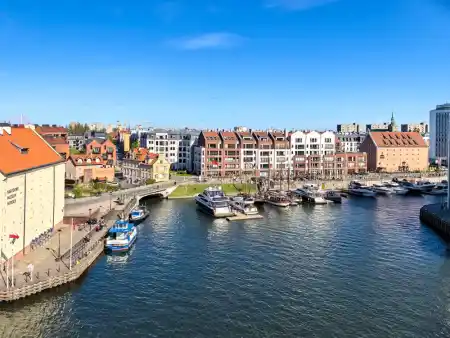
Why You Shouldn’t Skip It
The Żuraw isn’t just technical—it’s symbolic and aesthetic. A reminder that even in an age without steam, engines, batteries, or the cloud, people built things that worked for centuries.
When you finally step out of the museum and back onto the waterfront, it feels like you’ve exited a time machine. Even if, we agreed, it could use a modern elevator for us.
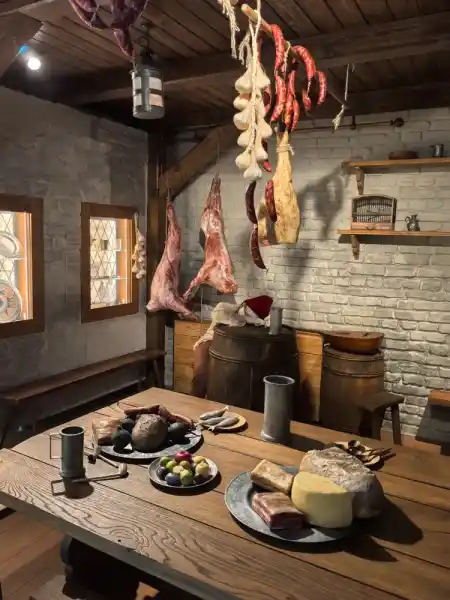
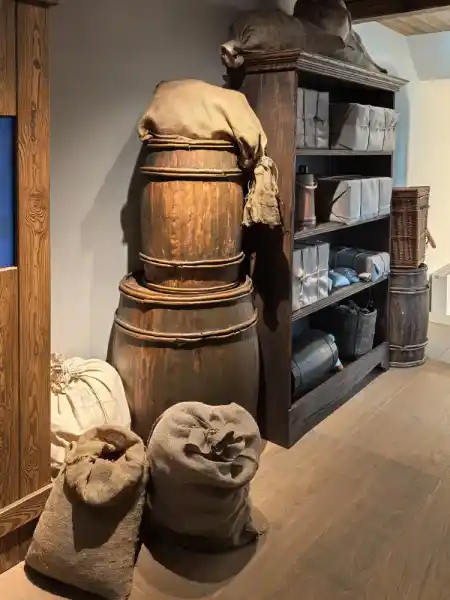
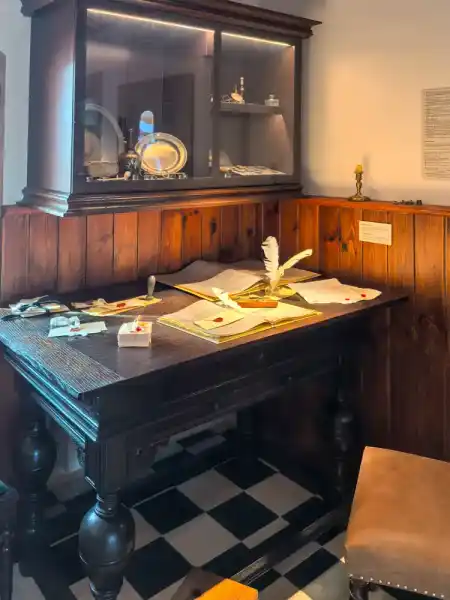
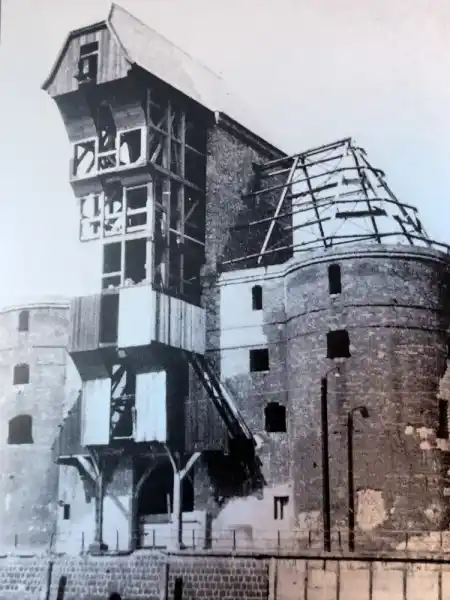
Practical Tips for Curious Wanderers
- The Gdański Żuraw (Gdańsk Crane) is on the Motława River waterfront—you really can’t miss it.
- Tickets are just a few euros. Entry is free with the Gdańsk Tourist Card.
- Inside, you’ll find part of the National Maritime Museum and access to the SS Sołdek, a preserved cargo ship worth visiting.
- After your visit, grab a coffee at one of the riverside cafés and watch the evening sun bounce off the Żuraw’s windows. Romantic—even if Johny would’ve preferred a croissant and a sausage.

